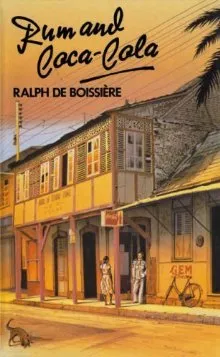Rum and Coca Cola
By (author): "Ralph De Boissiere"
Publish Date:
October 1984
ISBN0954359658
ISBN139780954359652
AsinRum and Coca Cola
Original titleRum and Coca Cola
"The setting for De Boissiere's second novel "Rum and Coca Cola" (republished in 2006) is the Second World War when thousands of American soldiers came to Trinidad to build and man military bases...The novel is, in a Caribbean context, a rare and largely successful attempt to create fictional models which give a panoramic view of their society..."The American military had in effect become the rulers. "Rum and Coca-Cola" is set at a time when the dollars from the American military presence changed Trinidad from a neglected and quasi-feudal British colony into a competitive market economy in which "we is all sharks, the stronger feedin' on the weaker." Both forces remain alive in Trinidadian society, the unfinished revolts of 1937 and 1970, and the individualistic consumer materialism which was fueled by the oil boom. Now that the boom has gone and social tensions rise, de Boissiere's second novel seem more relevant than ever.There is not the same tension as in his first book "Crown Jewel", because everyone had a job and many had two. The conflicts were of a more subtle sort - the breaking down of British prestige, the mockery of former British might, under American occupation.The novel is, in a Caribbean context, a rare and largely successful attempt to create fictional models which give a panoramic view of their society. It gives not merely a static or descriptive background against which characters perform, but a dynamic image of society created by the actions and social relationships of the characters."Rum and Coca-Cola" was published first published without much remark four decades ago in Australia, has rightly reissued by Lux-Verbi and with justified acclaim. It remains relevant because it give an unrivaled portrayal of a period in Trinidad's recent past which is still very much alive in shaping its present. The book reveals de Boissiere's dedication to promoting anti-oppression politics and feminist activism.For ambitious Mopsy, Fred, a union activist, and Indra, an educated Indian woman, the arrival of American soldiers means Trinidad will never be the same. Fred Collingwood, a principled black working-class socialist is doomed because of his "moral strength in all its beauty" and he destroys the relationship with Marie, the woman he most loves, because he displaces his desire to change society onto her and in the process destroys her sense of worth.Indra, the part-Indian girl from a lower-middle-class family, struggles against a "terrible division of spirit" which affects her social and racial sensibilities. Even though she makes a commitment to the working-class movement she still feels cut off, "doomed at this time to a lonely pursuit of the dust they raised in their forward marching." But it is the character of Marie, trapped by the lightness of her color into believing that she can escape into whiteness, which provides the novel's tragic focus. Of the three main characters, she is the one to benefit most materially from the war-time boom, but her unremitting efforts to escape from her past of poverty and casual prostitution are made at the expense of her inner self. Her fate is tragic because she sees herself engaged in a battle for individual self-hood, but in the process becomes separated from what she most truly is and disintegrates as a personality.Yet "Rum and Coca-Cola" does not succumb to pessimism. Indra's cry, "O my God! But what am I capable of" is agonized, but the possibilities of moral choice and the issues of human capacity remain central to de Boissiere's vision. He sees Trinidad moving in a direction which he detests, but when he has Fred reflect on what has occurred, he shows him capable of taking something positive from it. He sees a society which is not yet free, but one in which old colonial illusions have been destroyed.The title "Rum and Coca Cola" became the name of probably the best known Calypso of all times, made famous by the Andrews Sisters in the 1940's. It was even the subject of a famous court case against Leo Feist, Inc.
